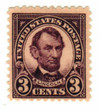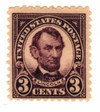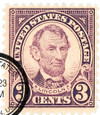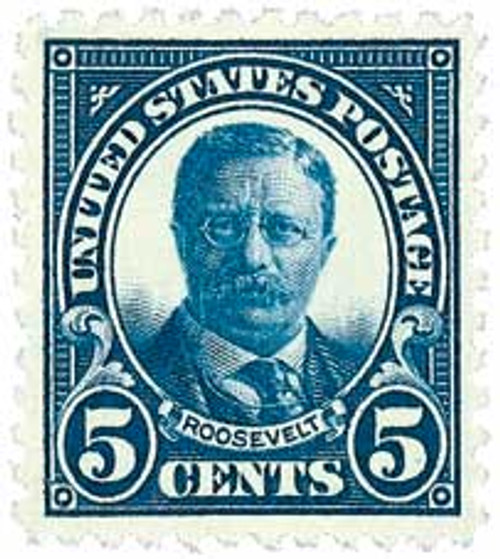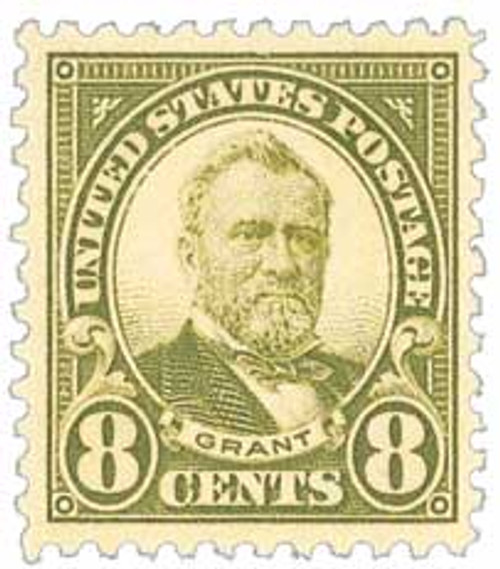
# 555 - 1923 3c Lincoln, violet
Series of 1922-25 3¢ Lincoln
Flat Plate Printing
First City: Hodgenville, KY and Washington, DC
Quantity Issued: 372,593,077
Printed by: Bureau of Engraving and Printing
Printing Method: Flat plate
Perforation: 11 gauge
Color: Violet
The Series of 1922-25
and the Wheels of Progress
Lincoln Memorial Issue
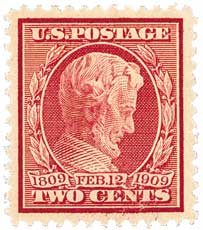
On February 12, 1909, the US Post Office issued a set of stamps commemorating the 100th anniversary of Abraham Lincoln’s birth.
One year after Lincoln’s assassination, the Post Office issued its first stamp honoring the fallen president. That black 1866 issue is considered to be America’s first mourning stamp. From then until 1907, there was always at least one definitive stamp picturing Lincoln.
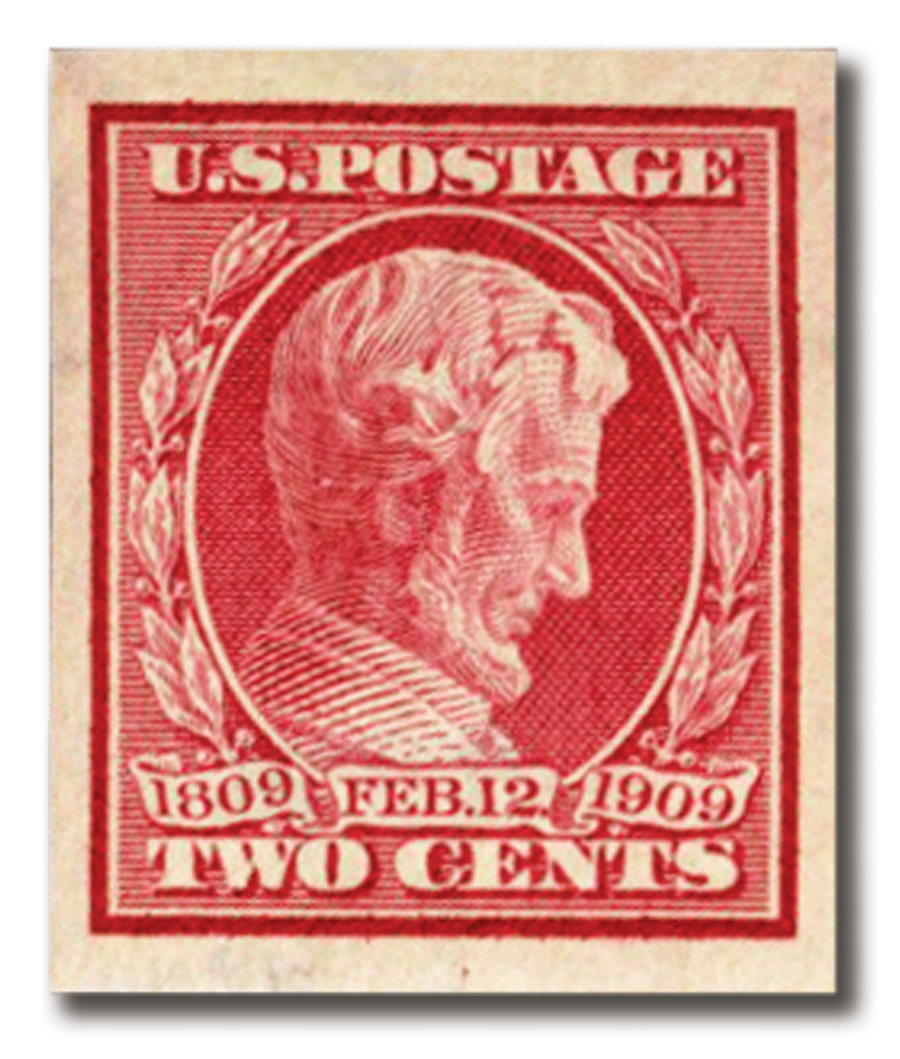
Then in 1908, the Post Office introduced the Washington-Franklin Series, a long-running series that would only feature the portraits of George Washington and Benjamin Franklin. There was some public outcry in reaction to this, as some felt that Lincoln should always be honored on US stamps.
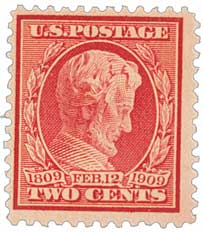
Luckily for them, they didn’t have to wait long to get a new stamp. On February 12, 1909, the Post Office issued the first three Lincoln Memorial Issue stamps on what would have been his 100th birthday. The stamps all featured the same design, based on a statue of Lincoln located in Chicago’s Grant Park. The stamps didn’t include Lincoln’s name but did include his birth date and birth year and the year of issue.
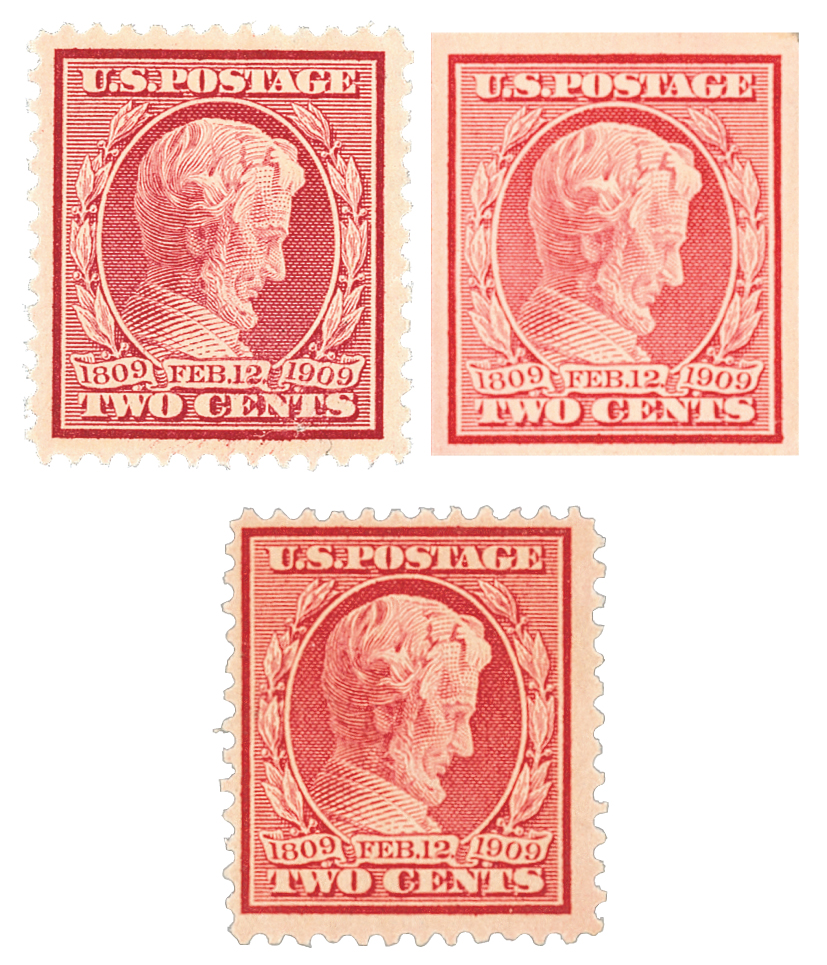
The stamps were notable for being the first definitive-sized commemoratives. And their two-cent denomination, the rate for a single-ounce, first-class letter, made them the first Lincoln stamps to see usage on regular mail in the US. Additionally, these were the first US commemoratives issued in just one denomination. Previous commemorative issues (such as the Columbians, Trans-Mississippi Exposition, and Pan-American Exposition) were produced in multiple denominations to meet a variety of postal services.
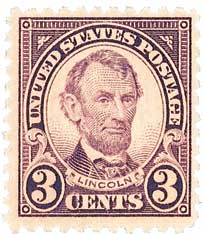
In all, the Lincoln Memorial Issue consisted of three stamps – a perf. 12 stamp, an imperforate stamp, and one printed on experimental bluish-gray paper (also perforated 12). The bluish-gray paper was created due to the BEPs desire to create a better product.
One of the main problems the Bureau was encountering was paper shrinkage. Since the stamps were wet printed they would shrink as the paper dried, causing irregular and “off center” perforations, which resulted in a considerable amount of waste. To combat the problem, the Bureau changed the composition of the paper by adding 35% wool rag to the wood pulp, which gave them a bluish tint.
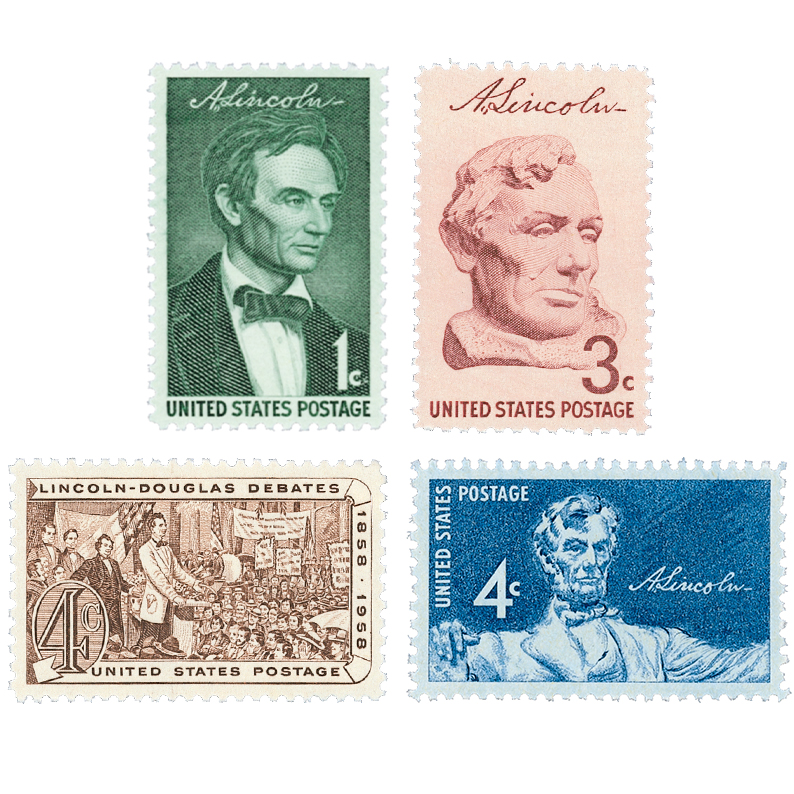
Lincoln once again returned to definitive stamps on February 12, 1923, after the Post Office ended the Washington-Franklin Series. And he reappeared on commemoratives again in 1959, on a set of stamps issued to mark the 150th anniversary of his birth. The first of those stamps, US #1113, was issued on his birthday, February 12.

And 50 years later Lincoln was honored with another set of stamps honoring his 200th birthday in 2009. It’s interesting to note that over the years, several Lincoln definitives were also issued on November 19, the date of Lincoln’s Gettysburg Address.
Click here for lots more Lincoln stamps.
Series of 1922-25 3¢ Lincoln
Flat Plate Printing
First City: Hodgenville, KY and Washington, DC
Quantity Issued: 372,593,077
Printed by: Bureau of Engraving and Printing
Printing Method: Flat plate
Perforation: 11 gauge
Color: Violet
The Series of 1922-25
and the Wheels of Progress
Lincoln Memorial Issue

On February 12, 1909, the US Post Office issued a set of stamps commemorating the 100th anniversary of Abraham Lincoln’s birth.
One year after Lincoln’s assassination, the Post Office issued its first stamp honoring the fallen president. That black 1866 issue is considered to be America’s first mourning stamp. From then until 1907, there was always at least one definitive stamp picturing Lincoln.

Then in 1908, the Post Office introduced the Washington-Franklin Series, a long-running series that would only feature the portraits of George Washington and Benjamin Franklin. There was some public outcry in reaction to this, as some felt that Lincoln should always be honored on US stamps.

Luckily for them, they didn’t have to wait long to get a new stamp. On February 12, 1909, the Post Office issued the first three Lincoln Memorial Issue stamps on what would have been his 100th birthday. The stamps all featured the same design, based on a statue of Lincoln located in Chicago’s Grant Park. The stamps didn’t include Lincoln’s name but did include his birth date and birth year and the year of issue.

The stamps were notable for being the first definitive-sized commemoratives. And their two-cent denomination, the rate for a single-ounce, first-class letter, made them the first Lincoln stamps to see usage on regular mail in the US. Additionally, these were the first US commemoratives issued in just one denomination. Previous commemorative issues (such as the Columbians, Trans-Mississippi Exposition, and Pan-American Exposition) were produced in multiple denominations to meet a variety of postal services.

In all, the Lincoln Memorial Issue consisted of three stamps – a perf. 12 stamp, an imperforate stamp, and one printed on experimental bluish-gray paper (also perforated 12). The bluish-gray paper was created due to the BEPs desire to create a better product.
One of the main problems the Bureau was encountering was paper shrinkage. Since the stamps were wet printed they would shrink as the paper dried, causing irregular and “off center” perforations, which resulted in a considerable amount of waste. To combat the problem, the Bureau changed the composition of the paper by adding 35% wool rag to the wood pulp, which gave them a bluish tint.

Lincoln once again returned to definitive stamps on February 12, 1923, after the Post Office ended the Washington-Franklin Series. And he reappeared on commemoratives again in 1959, on a set of stamps issued to mark the 150th anniversary of his birth. The first of those stamps, US #1113, was issued on his birthday, February 12.

And 50 years later Lincoln was honored with another set of stamps honoring his 200th birthday in 2009. It’s interesting to note that over the years, several Lincoln definitives were also issued on November 19, the date of Lincoln’s Gettysburg Address.
Click here for lots more Lincoln stamps.




